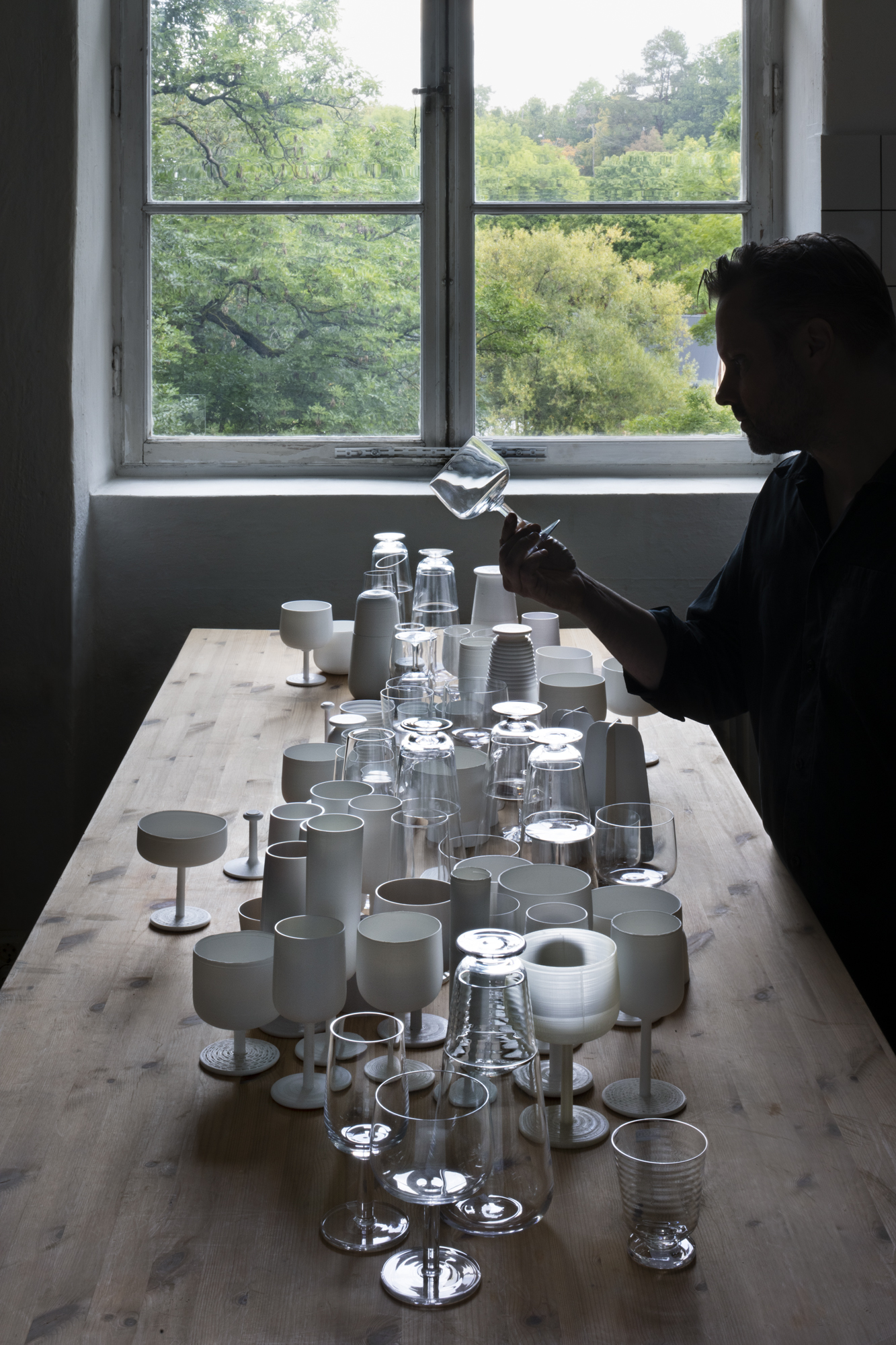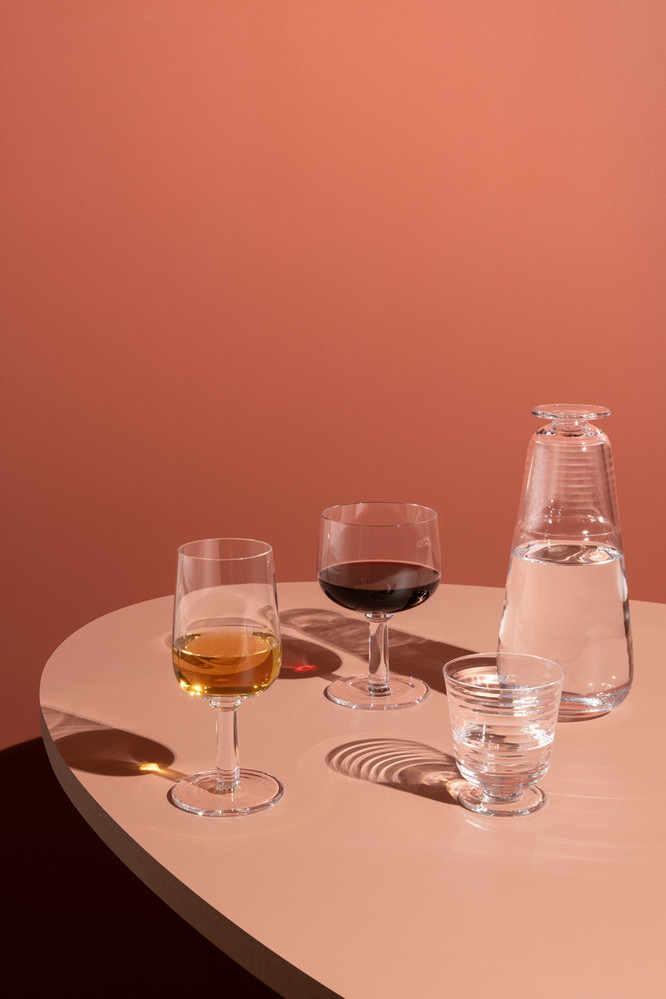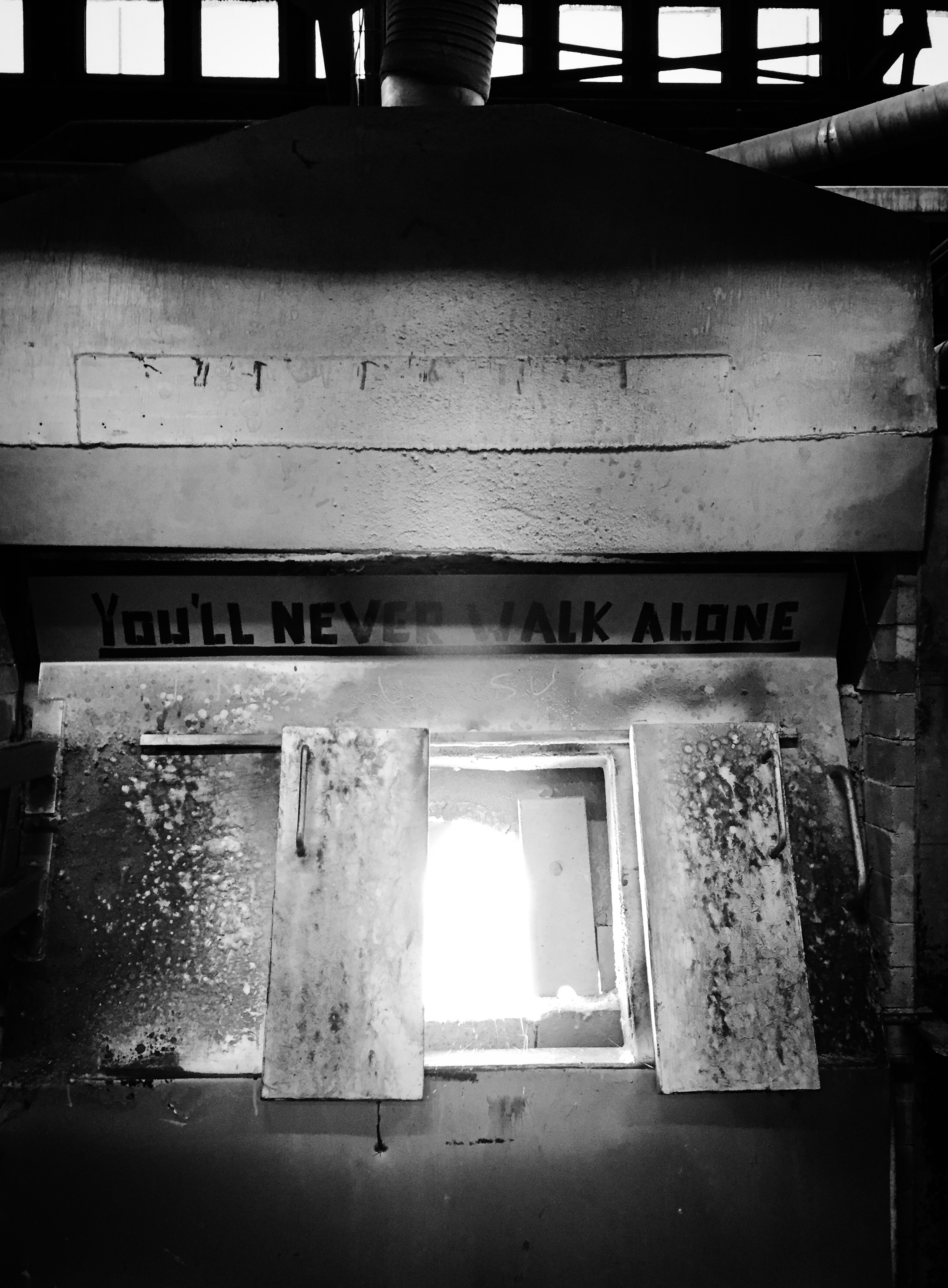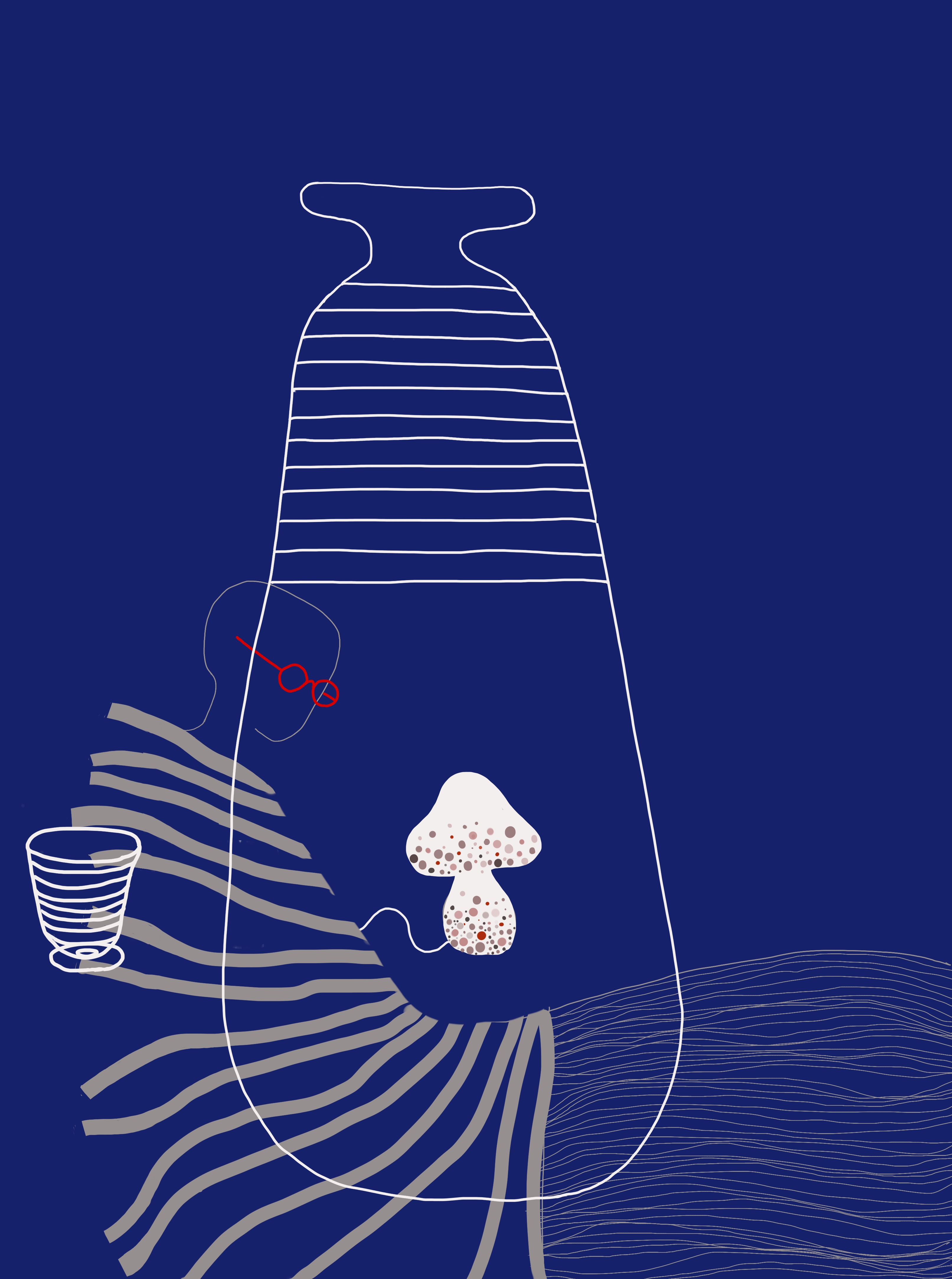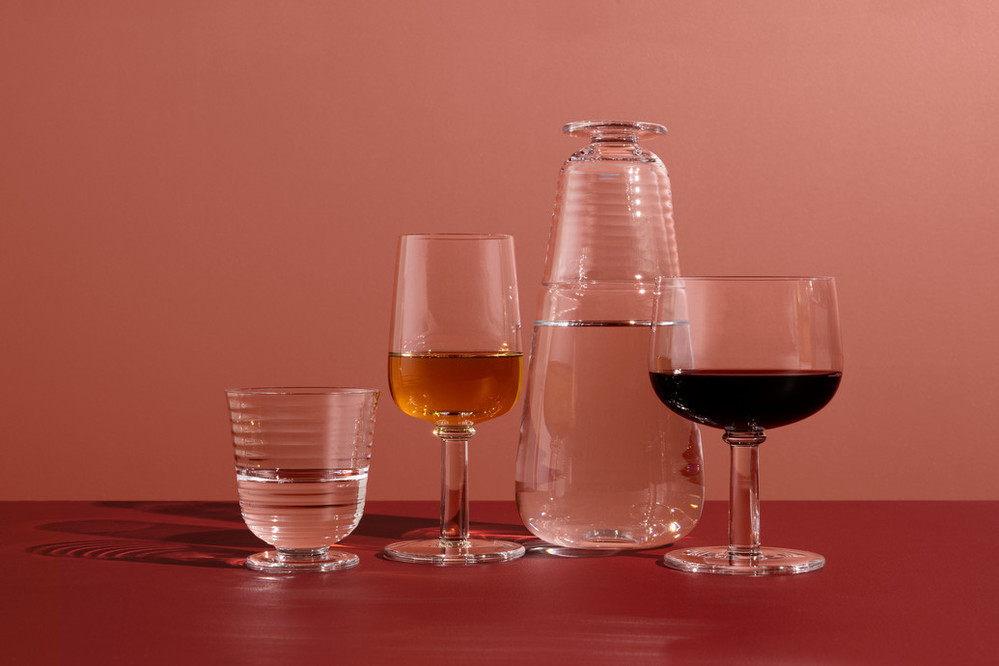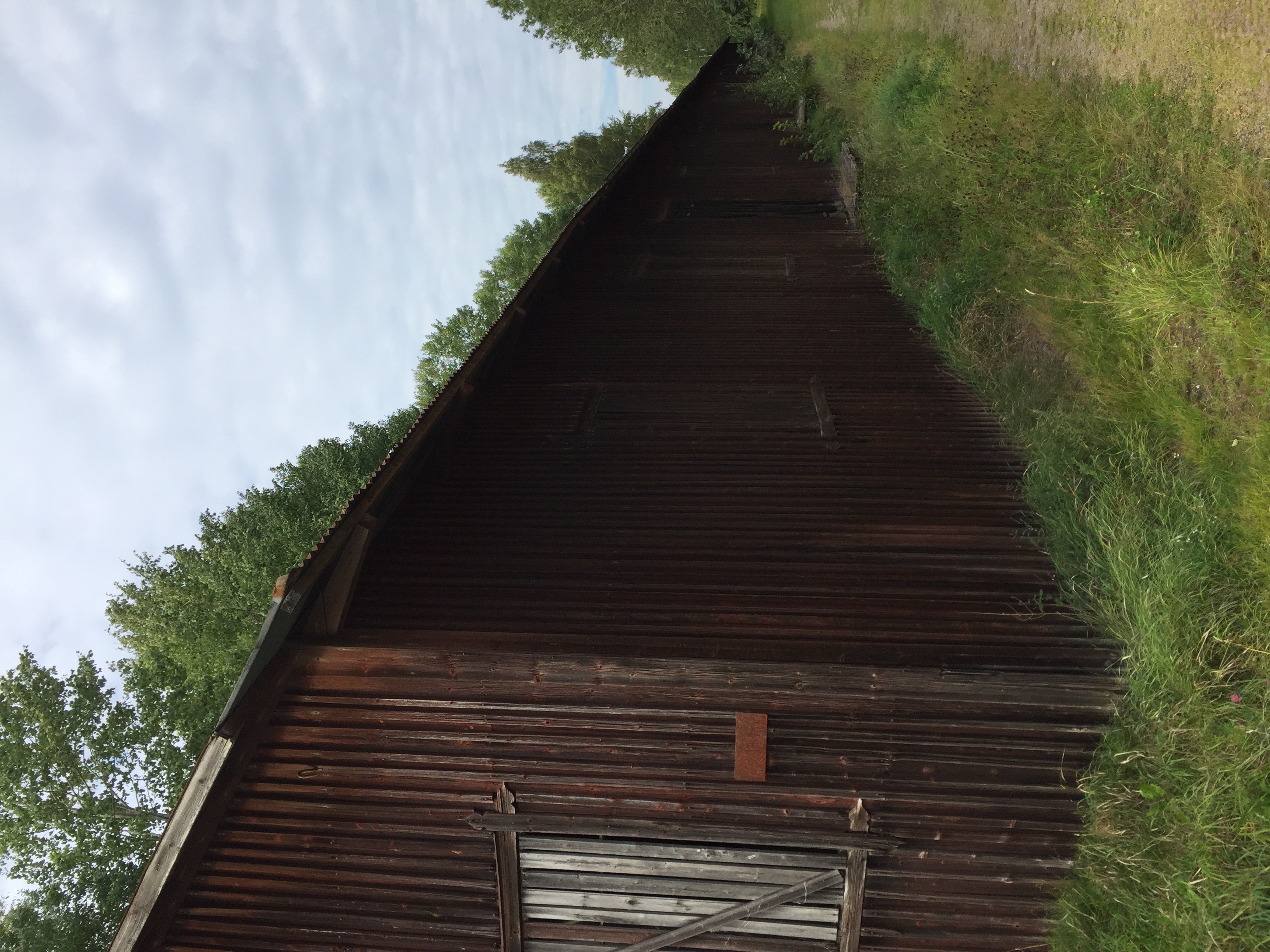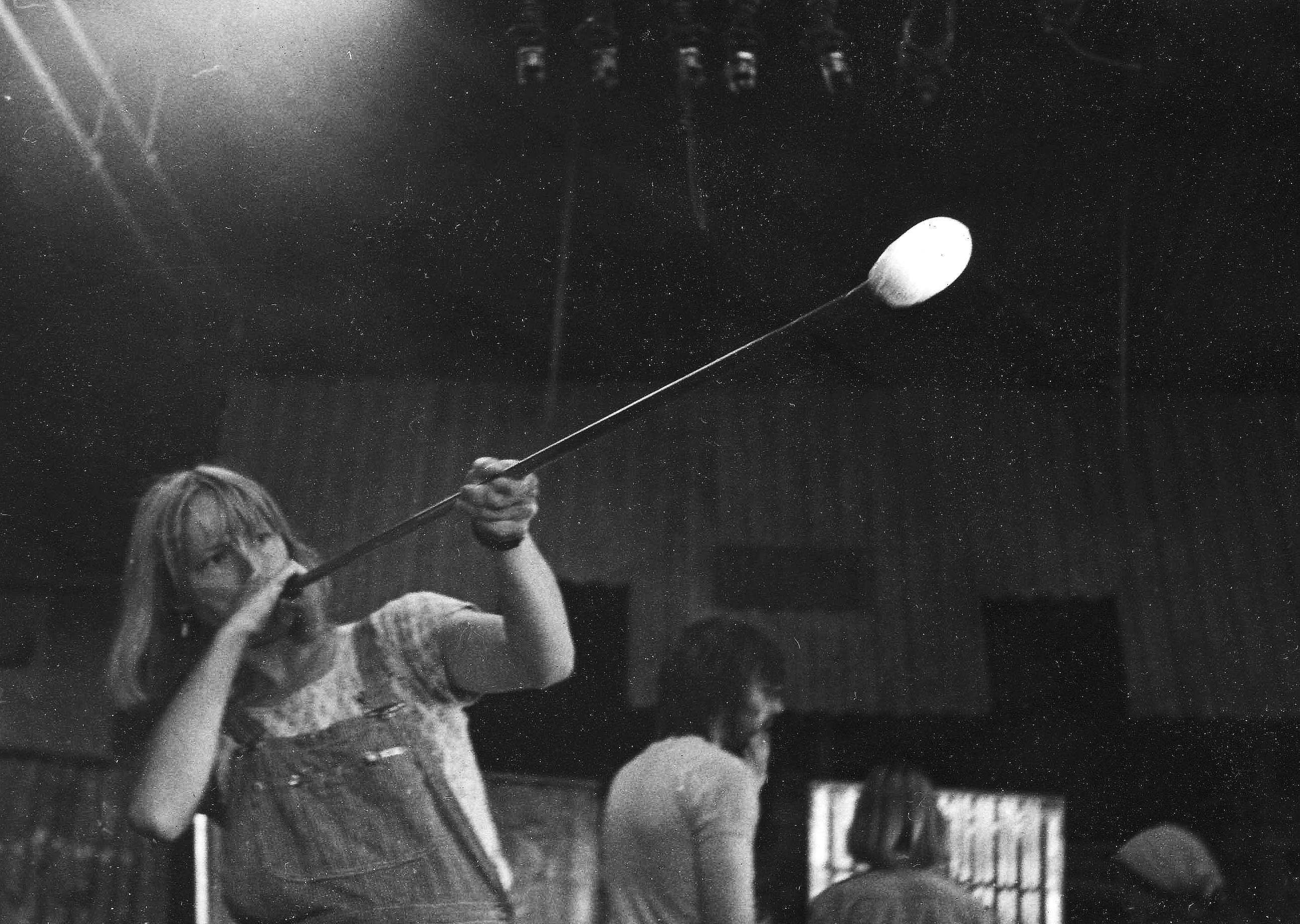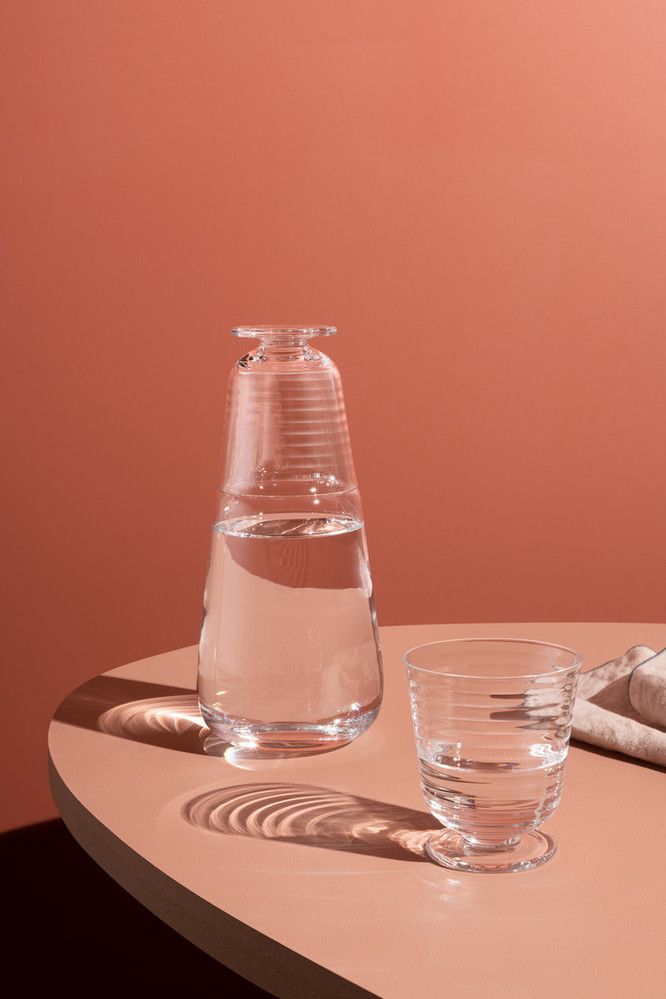
Viva, Kosta Boda, 2020
The project of making the glassware ”Viva” started with a study of contemporary beverage culture, and by combining this with traditions in Swedish glassmaking at a company that has manufactured glass since 1742. On a very personal level, the project also meant rediscovering a region where I lived for a short, but important period during my childhood, when my parents studied at Glasskolan in Orrefors. I was four years old in 1976 but scents, colors and people in the Kingdom of Chrystal have lingered on.
The goal of Viva was to make versatile glassware for everyday festivities, where we wanted each unit to enable informal use. The unaffected and pleasurable attitude around natural wines was a great source of inspiration when the series developed, but the goal was also to create products that felt obvious to use for all types of drinks. The wide cup is optimized for strong red wines but is also suitable for beer, drinks, juices or water. The narrower model is based on an ISO glass that is used for wine tasting, which makes it optimal for both red and white wine. But the narrow design also makes it perfect for sparkling drinks. The water glass has an informal touch taken from Asian street restaurants where cold beer is often served in small, sympathetic glasses. It has been supplemented with a characteristic jug that comletes the Viva family. The glass’s function as a lid has resulted in a ribbed, tactile surface.
From the start, we focused on a machine-made product, which increased the challenge in the design process. A large part of the development took place behind computer screens and in front of 3D printers rather than on the factory’s hot workshop floor when we optimized the parts’ sizes, functions and shapes. At the same time, I wanted the design to reflect the importance of the craft that decides why a glass is designed as it is. The pearl-shaped part where the cup meets the bottom is called a bats or avolio and is a traditional and decorative way of creating a strong attachment between the parts. An addition that gave the glass a more characteristic but also architectural expression.
The result is a progressive but at the same time quite romantic, maybe even sentimental collection, where the feeling of craftsmanship is enhanced despite the fact that they are industrially made objects. It echoes from Simon Gate and Edward Hald, all carefully monitored by Monica Backström’s divine spirit.
